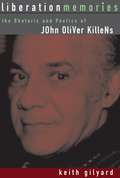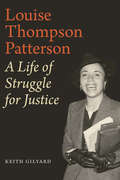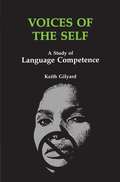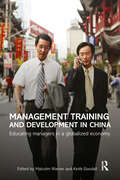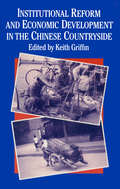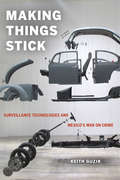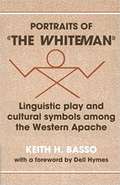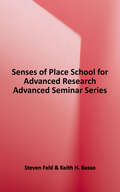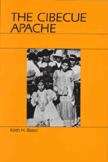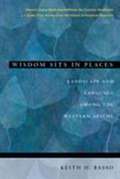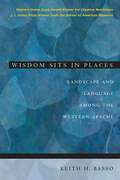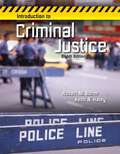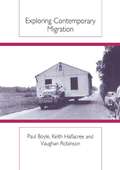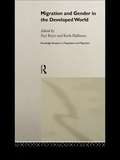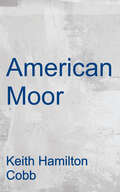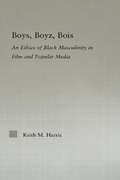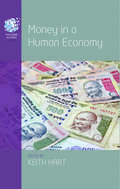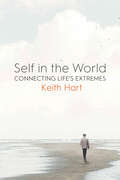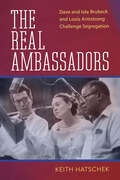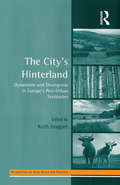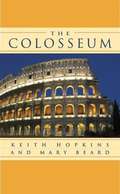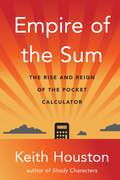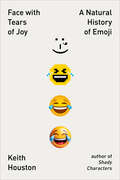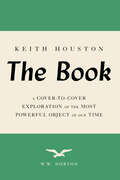- Table View
- List View
Liberation Memories: The Rhetoric and Poetics of John Oliver Killens
by Keith GilyardNo serious history of the development of the African American novel from the 1950s onward can be written without reference to John Oliver Killens. A two-time nominee for the Pulitzer Prize and founding chairman of the legendary Harlem Writers Guild, Killens was regarded by many as a spiritual father who inspired a generation of African American novelists with his politically charged works. And yet today he rarely receives proper critical attention. Seeking to strengthen our understanding of this important literary figure, Keith Gilyard departs from standard critical frameworks to reveal Killens's novels as artful renderings of rich African American rhetorical forms and verbal traditions. Gilyard finds that many critics, adhering to ideals of art for art's sake or narrative conciseness, are ill-equipped to appreciate the many ways in which Killens's fiction succeeds. Rejecting the "pure art" position, Killens sought to articulate Black heroism particularly within a family or community context, offering a set of values he deemed liberatory. He focused on rendering noble and polemical characters, and his work represents a distinguished fusion of sociopolitical persuasion (rhetoric) and literary artifact (poetics). To help illuminate such novels as Youngblood (1954), And Then We Heard the Thunder (1962), and The Cotillion (1971), Gilyard examines Killens's work as an essayist and cultural organizer, highlighting his activism. His life and literary production can be partly characterized, Gilyard suggests, by the African American jeremiad--a major rhetorical form in the Black intellectual tradition expressing faith that America's destiny is to become an authentic, pluralistic democracy.
Louise Thompson Patterson: A Life of Struggle for Justice
by Keith GilyardBorn in 1901, Louise Thompson Patterson was a leading and transformative figure in radical African American politics. Throughout most of the twentieth century she embodied a dedicated resistance to racial, economic, and gender exploitation. In this, the first biography of Patterson, Keith Gilyard tells her compelling story, from her childhood on the West Coast, where she suffered isolation and persecution, to her participation in the Harlem Renaissance and beyond. In the 1930s and 1940s she became central, along with Paul Robeson, to the labor movement, and later, in the 1950s, she steered proto-black-feminist activities. Patterson was also crucial to the efforts in the 1970s to free political prisoners, most notably Angela Davis. In the 1980s and 1990s she continued to work as a progressive activist and public intellectual. To read her story is to witness the courage, sacrifice, vision, and discipline of someone who spent decades working to achieve justice and liberation for all.
Voices of the Self: A Study of Language Competence
by Keith GilyardA unique blend of memoir and scholarship, Keith Gilyard's Voices of the Self is a penetrating analysis of the linguistic and cultural "collision" experienced by African-American students in the public education system. Gilyard examines black students "negotiate" their way through school and discusses the tension between the use of Black English and Standard English, underlining how that tension is representative of the deeper conflict that exists between black culture and white expectations. Vivid descriptions--often humorous, sometimes disturbing, always moving--of Gilyard's own childhood experiences in school and society are interlaced with chapters of solid sociolinguistic scholarship. Encompassing the perspectives of both the "street" and the "academy," Voices of the Self presents an eloquent argument for cultural and linguistic pluralism in American public schools.
Management Training and Development in China: Educating Managers in a Globalized Economy (Routledge Contemporary China Series)
by Malcolm Warner Keith GoodallOne of the critical issues facing both the Chinese government and businesses operating in China is the lack of trained managers. This book, with contributions by internationally-known scholars from a wide range of countries, examines the Chinese response to the challenges of management training and development. It considers the development of business schools in the PRC and the impact of foreign partnerships on their operation. It summarizes the current trends in management training and development and outlines the likely course of future developments. Overall, this book is a comprehensive account of management training and development in China, and is an important resource in an area that has hitherto seen little substantive research.
Institutional Reform and Economic Development in the Chinese Countryside
by Keith GriffinFirst Published in 1985. This volume contains material prepared over a three week field trip by the authors in rural China in July and August of 1982 and then again in September 1983. Including field work in the areas of Shaanxi, and the Chongqing municipality.
Making Things Stick: Surveillance Technologies and Mexico's War on Crime
by Keith GuzikAt publication date, a free ebook version of this title will be available through Luminos, University of California Press's new Open Access publishing program for monographs. Visit www.luminosoa.org to learn more. With Mexico's War on Crime as the backdrop, Making Things Stick offers an innovative analysis of how surveillance technologies impact governance in the global society. More than just tools to monitor ordinary people, surveillance technologies are imagined by government officials as a way to reform the national state by focusing on the material things--cellular phones, automobiles, human bodies--that can enable crime. In describing the challenges that the Mexican government has encountered in implementing this novel approach to social control, Keith Guzik presents surveillance technologies as a sign of state weakness rather than strength and as an opportunity for civic engagement rather than retreat.
Portraits of "the Whiteman"
by Keith H. Bassoâ The Whiteman' is one of the most powerful and pervasive symbols in contemporary American Indian cultures. Portraits of â the Whiteman': linguistic play and cultural symbols among the Western Apache investigates a complex form of joking in which Apaches stage carefully crafted imitations of Anglo-Americans and, by means of these characterizations, give audible voice and visible substance to their conceptions of this most pressing of social â problems'. Keith Basso's essay, based on linguistic and ethnographic materials collected in Cibecue, a Western Apache community, provides interpretations of selected joking encounters to demonstrate how Apaches go about making sense of the behaviour of Anglo-Americans. The portraits developed in these texts are understood as models of Whitemen and for dealing with Whitemen created by Apaches for Apaches. More obliquely, they also express Apaches' conception of themselves, for â the Whiteman' has long been a symbol of what â the Apache' is not. This study draws on current theory in symbolic anthropology, sociolinguistics, and the dramaturgical model of human communication developed by Erving Goffman. Although the assumptions and premises that shape these areas of inquiry are held by some to be quite disparate, this analysis shows them to be fully compatible and mutually complementary. In order to make explicit the meanings of joking texts, Basso examines in detail the abstract principles, both linguistic and nonlinguistic, for constructing and interpreting joking imitations in the context of face-to-face encounters. An exercise in cultural interpretation, this essay is also a study of ethnographic theory, the anthropology of play, American Indian humor, and the function of ethic boundaries in the everyday life of a modern Western Apache community.
Senses of Place (School for Advanced Research Advanced Seminar)
by Keith H. Basso Steven FeldThe complex relationship of people to places has come under increasing scholarly scrutiny in recent years as acute global conditions of exile, displacement, and inflamed borders-to say nothing of struggles by indigenous peoples and cultural minorities for ancestral homelands, land rights, and retention of sacred places-have brought the political question of place into sharp focus. But to date, little attention has been paid to the ethnography of place, to how people actually live in, perceive, and invest with meaning the places they call home. In this compelling new volume, eight respected ethnographers explore and lyrically evoke the ways in which people experience, express, imagine, and know the places in which they live. <p><p>Case studies range from the Apaches of Arizona's White Mountains to the residents of backwoods "hollers" in Appalachia and the Kaluli people of New Guinea's rain forests. As these writers confront the dilemmas and possibilities of an anthropological consideration of place, they make an important and moving contribution to our understanding of ourselves.
The Cibecue Apache
by Keith H. BassoThis is a study of an American Indian community that has retained its cultural character. The Apache of Cibecue have not survived unchanged from their turbulent past, but they maintain premises about the way the world is, revealed in belief and behavior, which are sharply divergent from those of the majority population of North America.
Wisdom Sits In Places: Landscapes and Language Among the Western Apache
by Keith H. BassoFour essays recount stories Western Apaches tell about the landscape. Includes comments from a cultural anthropologist.
Wisdom Sits in Places: Landscape and Language Among the Western Apache
by Keith H. BassoWinner of the 2001 J. I. Staley Prize from the School of American Research and the 1996 Western States Book Award for Creative Nonfiction. Anthropological study of Apache concepts of geographical places and place names.This remarkable book introduces us to four unforgettable Apache people, each of whom offers a different take on the significance of places in their culture. Apache conceptions of wisdom, manners and morals, and of their own history are inextricably intertwined with place, and by allowing us to overhear his conversations with Apaches on these subjects Basso expands our awareness of what place can mean to people. Most of us use the term sense of place often and rather carelessly when we think of nature or home or literature. Our senses of place, however, come not only from our individual experiences but also from our cultures. Wisdom Sits in Places, the first sustained study of places and place-names by an anthropologist, explores place, places, and what they mean to a particular group of people, the Western Apache in Arizona. For more than thirty years, Keith Basso has been doing fieldwork among the Western Apache, and now he shares with us what he has learned of Apache place-names--where they come from and what they mean to Apaches. "This is indeed a brilliant exposition of landscape and language in the world of the Western Apache. But it is more than that. Keith Basso gives us to understand something about the sacred and indivisible nature of words and place. And this is a universal equation, a balance in the universe. Place may be the first of all concepts; it may be the oldest of all words."--N. Scott Momaday "In Wisdom Sits in Places Keith Basso lifts a veil on the most elemental poetry of human experience, which is the naming of the world. In so doing he invests his scholarship with that rarest of scholarly qualities: a sense of spiritual exploration. Through his clear eyes we glimpse the spirit of a remarkable people and their land, and when we look away, we see our own world afresh."--William deBuys "A very exciting book--authoritative, fully informed, extremely thoughtful, and also engagingly written and a joy to read. Guiding us vividly among the landscapes and related story-tellings of the Western Apache, Basso explores in a highly readable way the role of language in the complex but compelling theme of a people's attachment to place. An important book by an eminent scholar."--Alvin M. Josephy, Jr.
Introduction to Criminal Justice (Eighth Edition)
by Robert Bohm Keith HaleyIntroduction to Criminal Justice is the perfect text for students who are interested in pursuing a career in criminal justice and for those who simply want to learn more about the criminal justice system. The authors' combined experience of more than 50 years in teaching introduction to criminal justice as well as working in the field -- Bohm as a correctional officer and Haley as a police officer -- come through in their accessible yet comprehensive presentation. They make it easy for readers to understand that much of what the public "knows" about criminal justice in the United States is myth, and help students learn the truth about the U. S. criminal justice system. With the CourseSmart eTextbook version of this title, students can save up to 50% off the cost of a print book, reduce their impact on the environment, and access powerful web tools for learning. Faculty can also review and compare the full text online without having to wait for a print desk copy. CourseSmart is an online eTextbook, which means users need to be connected to the internet in order to access. Students can also print sections of the book for maximum portability.
Exploring Contemporary Migration
by Paul Boyle Keith Halfacree Vaughan RobinsonExploring Contemporary Migration provides the first comprehensive introduction to the various aspects of population migration in both the developed and the developing worlds. Some of the most important quantitative and qualitative methods used for the description and analysis of migration are presented in a clearly structured and accessible way. The various theoretical approaches used to explain the complex patterns of migration are also summarised. These patterns are then explored through the use of specific migration-related themes: employment, stage in the life course, quality of life, societal engineering, violence and persecution, and the role of culture.Exploring Contemporary Migration is written in a user-friendly, accessible style, appealing to undergraduate students of population geography and social science students taking a population module. This text will also be valuable reading to those researchers and academics concerned with gaining a broad understanding of the dynamics and patterns of contemporary population.
Migration and Gender in the Developed World (Routledge Research in Population and Migration)
by Paul Boyle Keith HalfacreeThe subject of migration has traditionally been analysed through the lens of economic factors. The importance of adopting a gender sensitive perspective to academic work is now generally appreciated. Migration and Gender in the Developed World contains chapters from a diverse range of leading contributors who apply such a perspective to the study of migration in the countries of the developed world. Each chapter demonstrates how migration is highly gendered, with the experiences of women and men often varying markedly in different migration situations. The volume covers a wide range of migration issues and draws out the importance of gender issues in each area, including: dual career households regional migration patterns emigration from Ireland and Hong Kong elderly migration the migration decision-making process and the costs and benefits attached to migration Approaching the subject from a variety of academic traditions including Geography, Sociology and Social Policy, the volume combines both quantitative analysis of factual data and qualitative analysis of interview material to demonstrate the importance of studying migration through gender sensitive eyes.
American Moor (Modern Plays Series)
by Keith Hamilton CobbKeith Hamilton Cobb embarks on a poetic exploration that examines the experience and perspective of black men in America through the metaphor of Shakespeare's character Othello, offering up a host of insights that are by turns introspective and indicting, difficult and deeply moving. American Moor is a play about race in America, but it is also a play about who gets to make art, who gets to play Shakespeare, about whose lives and perspectives matter, about actors and acting, and about the nature of unadulterated love.
Boys, Boyz, Bois: An Ethics of Black Masculinity in Film and Popular Media (Studies in African American History and Culture)
by Keith HarrisBoys, Boyz, Bois concerns questions of ethics, gender and race in popular American images, national discourse and cultural production by and about black men. The book proposes an ethics of masculinity, as ethnics refers to a system of morality and valuation and as ethics refers to a care of the self and ethical subject formation. The texts of analysis include recent films by black/African American filmmakers, gangsta rap and hip-hop and black star persona: texts ranging from Blaxploitation and New Black Cinema to contemporary music video to autobiography and the public image of Sidney Poitier. The book is a significant contribution to cultural studies and gender studies and critical race theory. What is distinctive about the book is the question of ethics as a question of race and gender.
Money in a Human Economy (The Human Economy #5)
by Keith HartA human economy puts people first in emergent world society. Money is a human universal and now takes the divisive form of capitalism. This book addresses how to think about money (from Aristotle to the daily news and the sexual economy of luxury goods); its contemporary evolution (banking the unbanked and remittances in the South, cross-border investment in China, the payments industry and the politics of bitcoin); and cases from 19th century India and Southern Africa to contemporary Haiti and Argentina. Money is one idea with diverse forms. As national monopoly currencies give way to regional and global federalism, money is a key to achieving economic democracy.
Self in the World: Connecting Life's Extremes
by Keith HartEminent anthropologist Keith Hart draws on the humanities, popular culture and his own experiences to help readers explore their own place in history. We each embark on two life journeys – one out into the world, the other inward to the self. With these journeys in mind, anthropologist, amateur economist and globetrotter Keith Hart reflects on a life of learning, sharing and remembering to offer readers the means of connecting life’s extremes – individual and society, local and global, personal and impersonal dimensions of existence and explores what it is that makes us fully human. “This is a work of great originality. Keith Hart has had an unorthodox academic career and it has liberated him in many ways from academic pieties. His background in African ethnography gives him a fascinating angle on all sorts of things, not least the possibility of a more African-influenced global future. The book is full of surprises and mind-shifting observations. I actually couldn't put it down.”—Sherry B. Ortner, UCLA From the introduction: People have many sides, but I will focus here on two. Each of us is a biological organism with a historical personality that together make us a unique individual. But we cannot live outside society which shapes us in unfathomable ways. Human beings must learn to be self-reliant (not self-interested) in small and large ways: no-one will brush your teeth for you or save you from being run over while crossing the street. We each must also learn to belong to others, merging personal identity in a plethora of social relations and categories. Modern ideology insists that being individual and mutual is problematic. The culture of capitalist societies anticipates a conflict between them. Yet they are inseparable aspects of human nature.
The Real Ambassadors: Dave and Iola Brubeck and Louis Armstrong Challenge Segregation (American Made Music Series)
by Keith HatschekWinner of the 2023 ASCAP Foundation Deems Taylor/Virgil Thomson Book AwardRecipient of a 2023 Certificate of Merit for Best Historical Research in Recorded Jazz from the Association for Recorded Sound CollectionsKeith Hatschek tells the story of three determined artists: Louis Armstrong, Dave Brubeck, and Iola Brubeck and the stand they took against segregation by writing and performing a jazz musical titled The Real Ambassadors. First conceived by the Brubecks in 1956, the musical’s journey to the stage for its 1962 premiere tracks extraordinary twists and turns across the backdrop of the civil rights movement. A variety of colorful characters, from Broadway impresarios to gang-connected managers, surface in the compelling storyline. During the Cold War, the US State Department enlisted some of America’s greatest musicians to serve as jazz ambassadors, touring the world to trumpet a so-called “free society.” Honored as celebrities abroad, the jazz ambassadors, who were overwhelmingly African Americans, returned home to racial discrimination and deferred dreams. The Brubecks used this double standard as the central message for the musical, deploying humor and pathos to share perspectives on American values. On September 23, 1962, The Real Ambassadors’s stunning debut moved a packed arena at the Monterey Jazz Festival to laughter, joy, and tears. Although critics unanimously hailed the performance, it sadly became a footnote in cast members’ bios. The enormous cost of reassembling the star-studded cast made the creation impossible to stage and tour. However, The Real Ambassadors: Dave and Iola Brubeck and Louis Armstrong Challenge Segregation caps this jazz story by detailing how the show was triumphantly revived in 2013 by the Detroit Jazz Festival and in 2014 by Jazz at Lincoln Center. This reaffirmed the musical’s place as an integral part of America’s jazz history and served as an important reminder of how artists’ voices are a powerful force for social change.
The City's Hinterland: Dynamism and Divergence in Europe's Peri-Urban Territories (Perspectives on Rural Policy and Planning)
by Keith HoggartDespite the fact that the rural commuter belts of cities are major loci of population change, economic growth and dynamic social change within city regions, most research tends to ignore this area while focusing on the built-up city core. However, with the current emphasis on the role of rural areas in policy debates, it is vital to recognize the importance of the 'commuter belt'. By comparing four major European cities (in England, France, Germany and Spain), this book offers the first comparative investigation of the dynamism of city rural hinterlands. It assesses whether rural areas will become effectively integrated into quality of life improvements as a result of their inter-dependencies with cities, focusing on the critical arenas of employment change, housing and service provision. In doing so, it investigates how change in these three fields impact on the quality of life and physical environment of rural hinterlands.
The Colosseum (Wonders Of The World)
by Mary Beard Keith HopkinsByron and Hitler were equally entranced by Rome's most famous monument, the Colosseum. Mid-Victorians admired the hundreds of varieties of flowers in its crannies and occasionally shuddered at its reputation for contagion, danger, and sexual temptation. Today it is the highlight of a tour of Italy for more than three million visitors a year, a concert arena for the likes of Paul McCartney, and a national symbol of opposition to the death penalty. Its ancient history is chockfull of romantic but erroneous myths. There is no evidence that any gladiator ever said "Hail Caesar, those about to die..." and we know of not one single Christian martyr who met his finish here. <p><p> Yet the reality is much stranger than the legend as the authors, two prominent classical historians, explain in this absorbing account. We learn the details of how the arena was built and at what cost; we are introduced to the emperors who sometimes fought in gladiatorial games staged at the Colosseum; and we take measure of the audience who reveled in, or opposed, these games. The authors also trace the strange afterlife of the monument--as fortress, shrine of martyrs, church, and glue factory. Why are we so fascinated with this arena of death?
Empire of the Sum: The Rise And Reign Of The Pocket Calculator
by Keith HoustonThe hidden history of the pocket calculator—a device that ushered in modern mathematics, helped build the atomic bomb, and went with us to the moon—and the mathematicians, designers, and inventors who brought it to life. Starting with hands, abacus, and slide rule, humans have always reached for tools to simplify math. Pocket-sized calculators ushered in modern mathematics, helped build the atomic bomb, took us to the bottom of the ocean, and accompanied us to the moon. The pocket calculator changed our world, until it was supplanted by more modern devices that, in a cruel twist of irony, it helped to create. The calculator is dead; long live the calculator. In this witty mathematic and social history, Keith Houston transports readers from the nascent economies of the ancient world to World War II, where a Jewish engineer calculated for his life at Buchenwald, and into the technological arms race that led to the first affordable electronic pocket calculators. At every turn, Houston is a scholarly, affable guide to this global history of invention. Empire of the Sum will appeal to math lovers, history buffs, and anyone seeking to understand our trajectory to the computer age.
Face with Tears of Joy: A Natural History of Emoji
by Keith HoustonA vibrant exploration of the world’s newest language—where it came from, how it works, and where it’s going. We are surrounded by emoji. They appear in politics, movies, drug deals, our sex lives, and more. But emoji’s impact has never been explored in full. In this rollicking tech and pop culture history, Keith Houston follows emoji from its birth in 1990s Japan, traces its Western explosion in the 2000s, and considers emoji’s ever-expanding lexicon. Named for the world’s most popular pictogram, Face with Tears of Joy tells the whole story of emoji for the first time.
The Book: A Cover-to-Cover Exploration of the Most Powerful Object of Our Time
by Keith Houston"A masterful and overwhelmingly entertaining volume." —Clea Simon, Boston Globe In The Book, Keith Houston reveals that the paper, ink, thread, glue, and board from which a book is made tell as rich a story as the words on its pages. In an invitingly tactile history of this 2,000-year-old medium, Houston follows the development of writing, printing, the art of illustrations, and binding to show how we have moved from cuneiform tablets and papyrus scrolls to the hardcovers and paperbacks of today.
Framing Crime: Cultural Criminology and the Image
by Keith J. HaywardIn a world in which media images of crime and deviance proliferate, where every facet of offending is reflected in a ‘vast hall of mirrors’, Framing Crime: Cultural Criminology and the Image makes sense of the increasingly blurred line between the real and the virtual. Images of crime and crime control have become almost as 'real' as crime and criminal justice itself. The meaning of both crime and crime control now resides, not solely in the essential – and essentially false – factuality of crime rates or arrest records, but also in the contested processes of symbolic display, cultural interpretation, and representational negotiation. It is essential, then, that criminologists are closely attuned to the various ways in which crime is imagined, constructed and framed within modern society. Framing Crime responds to this demand with a collection of papers aimed at helping the reader to understand the ways in which the contemporary ‘story of crime’ is constructed and promulgated through the image. It also provides the relevant analytical and research tools to unearth the hidden social and ideological concerns that frequently underpin images of crime, violence and transgression. Framing Crime will be of interest to students and academics in the fields of criminology, crime and the media, and sociology.
